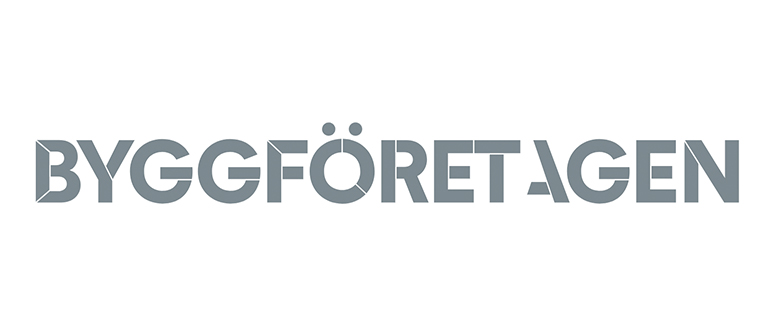Overall construction activity
After the output of the Dutch construction sector contracted by 1.5% in 2020, the Dutch construction sector has bounced back in 2021. The output grew by 1.8% in 2021, and this growth will accelerate in 2022 with a volume gain of 5.0%.
The Dutch construction sector came out of the pandemic relatively unscathed. In contrast to earlier crises, the incomes of households have been, for an important part, unaffected by the COVID-19 pandemic. This can be attributed to the extensive financial support packages that have been provided by the government and the deferral of payments offered to companies by tax authorities and banks. Because of this support, investments in construction remained relatively stable during the crisis. Furthermore, the renovation and maintenance market in construction profited from the shift in consumer spending from lockdown affected sectors (catering industry, tourism, events etc.).
The contraction of the production output in 2020 was mainly caused by problems in the issuance of building permits, due to the nitrogen emission ruling issued by the Council of State in May 2019. According to this ruling the then existing procedure to issue permits for nitrogen emitting activities (including construction projects) in the neighbourhood of vulnerable nature areas has been declared unlawful, and a consideration of permit application was ceased till a new procedure is developed. This has impacted a large share of construction projects. In the second half of 2020 the issuance of building permits began to pick up again, leading to a production increase in new residential and non-residential construction in 2021.
For 2022, positive growth rates of the construction output by volume are expected across the board. Overall, output will expand by 5%. The predictions are also positive for the medium term. Major factors for this positive outlook are the investments needed for the energy transition, climate adaptation and the housing needed in order to ease the tensions on the residential market. Infrastructural construction has an additional driver for production growth; the need to renovate or replace ageing infrastructural works.
Housebuilding
The output of residential construction by volume has increased by 3.6% in 2021. This growth has been spurred on by the growth of new residential construction; the growth rate has hit 8.9% in 2021. Despite this growth, the residential market is still under pressure; it is characterised by big price increases and fewer transactions. Statistics Netherlands calculated that the prices of existing houses had increased by 15,2% in 2021, while the number of transactions decreased by 4.0%. An important issue is that new residential construction cannot keep up with demographic developments. On average, these developments create the need for around 85.000 new houses each year. Although the number of new building permits has increased in 2021 (around 77.000) and is expected to increase to 83.000 permits in 2022, it fails to cover these developments. New residential construction output is expected to grow by 10½% in 2022 and 7% in 2023. In the medium term, output growth is expected to drop to a more modest rate of 1.5% per year, on average.
Residential reconstruction and renovation contracted by 2.5% in 2021. Many homeowners shifted spending in 2020 from sectors affected by the different lockdowns (holidays, restaurants, e.g.) to improving or enlarging their homes. This impulse was temporary and fell away for 2021. R&R output will recover in 2022, with an output growth of 3%. Residential maintenance work has increased by 2% in 2021, and will increase by 1.5% in 2022.
The new government, Rutte IV, has conceived a number of measures in order to combat the inadequate volumes of residential construction. Already, the government had agreed to reserve € 1 billion for municipalities between 2020-2023 to stimulate the construction of affordable housing. In the coming decade, the government has decided to inject € 1,1 billion in order to facilitate more new residential construction. Other measures include phasing out the so-called ‘Landlord levy’, a levy imposed on social housing associations. This levy will be phased out in steps until 2026. The government has made binding agreements with the housing associations to use the freed budget for new construction of affordable housing, R&R activities and improving the liveability of neighbourhoods.
GDP 2021
BILLION
POPULATION 2021
MILLION
Total investment in construction in 2021
BILLION
Non-residential construction
Non-residential construction has increased by 2.1% in 2021, after experiencing a contraction of 1.5% in 2020. This expansion is mainly attributable to a powerful growth of 7% in new non-residential construction. When looking at the types of buildings that experienced a growth in new construction output in 2021, the biggest growth in percentages can be found in logistical buildings (+16.5%) and educational buildings (+14.5%). The construction of other building types increased to a lesser extent. New non-residential construction output by volume will grow with 4.3% in 2022, with around 0.5% in 2023 and will on average decline by 0.5% in subsequent years.
Non-residential renovation and reconstruction (R&R) has contracted in 2021 by 5%. The biggest declines can be seen in the renovation and reconstruction of offices and agricultural buildings. The probable cause for the decline of the R&R output in the office sector is the uncertainty in the demand for office space after the pandemic. Owners of offices have scaled back on R&R activities because of this. The decline is surprising in light of the mandatory energy label C for offices, due to be implemented in 2023. About a quarter of the offices do not have this label as of yet.
Non-residential R&R output will expand by 5% in 2022, and will sustain this growth rate with around 4.5% in 2023. Measures to make social real estate more sustainable and the mandatory energy label C for offices will become big drivers for this growth. For the medium term, output volume is expected to grow at around 2% per year. Non-residential maintenance work has increased by 2.5% in 2021, and is expected to experience on average the same growth rate in the period 2022-2026.
Civil engineering
The civil engineering sector has had a difficult 2021; the output by volume has contracted by 2.1%. New construction and reconstruction saw a decline in output of 1.5%. There are differences between the different commissioning parties; works commissioned by the national government grew by volume, despite continuing challenges like the problems with nitrogen emissions. Infrastructural construction output commissioned by local authorities declined in 2021, mostly due to pressure on municipal budgets. The volume output of works initiated by corporate clients and other private parties also contracted. Maintenance output has contracted by 3% in 2021. The main cause of this contraction is the fact that many authorities advanced their maintenance projects to 2020.
For 2022, the civil engineering market is expected to expand by 3.1%. New construction and reconstruction will experience a growth of 2.5%. Although works commissioned by the national government will decline due to budget advancements, works commissioned by local authorities will expand. Municipalities will receive greater funds from the national government and new construction in residential and non-residential construction will fuel the need for site preparations. The volume output of works initiated by corporate clients will increase with 3%. This is mainly caused by projects initiated by electric network companies, who need to expand their capabilities in light of the energy transition. Maintenance output will grow by 4%. The total infrastructural construction output by volume is expected to grow with 4% in 2023, and on average 3% in the subsequent years.
| Per cent variation of investment in real terms on previous year | |||||||
| investment Mln. € fixed prices | |||||||
| Sectors | 2021a | 2018 | 2019 | 2020 | 2021a | 2022b | |
| 1. | Building | 63,875 | 9.1 | 7.8 | -2.7 | 2.9 | 5.5 |
| 1.1. Housebuilding | 36,175 | 10.6 | 5.9 | -3.6 | 3.6 | 6.4 | |
| 1.1.1. New | 17,050 | 13.7 | 8.5 | -10.1 | 8.9 | 10.2 | |
| 1.1.2. Renovation | 19,125 | 8.0 | 3.6 | 2.5 | -0.8 | 3.0 | |
| 1.2. Non residential (c) | 27,700 | 7.2 | 10.3 | -1.5 | 2.1 | 4.3 | |
| 1.2.1. Private | N/A | N/A | N/A | N/A | N/A | N/A | |
| 1.2.2. Public | N/A | N/A | N/A | N/A | N/A | N/A | |
| 2. | Civil Engineering | 17,750 | 3.8 | -0.3 | 2.7 | -2.1 | 3.1 |
| (1 + 2) | Total Construction | 81,625 | 7.9 | 5.9 | -1.5 | 1.8 | 5.0 |
| a: estimate - b: forecast - c: incl. R&M | |||||||
| Number of building permits in residential construction | |||||||
| 2018 | 2019 | 2020 | 2021a | 2022b | |||
| single dwelling | n/a | n/a | n/a | n/a | n/a | ||
| collective dwelling | n/a | n/a | n/a | n/a | n/a | ||
| other types of dwelling | n/a | n/a | n/a | n/a | n/a | ||
| Total | 70.714 | 60.697 | 70.075 | 77.000 | 83.000 | ||
| (Collective dwellings and other types of buildings: in number of flats) | |||||||


































